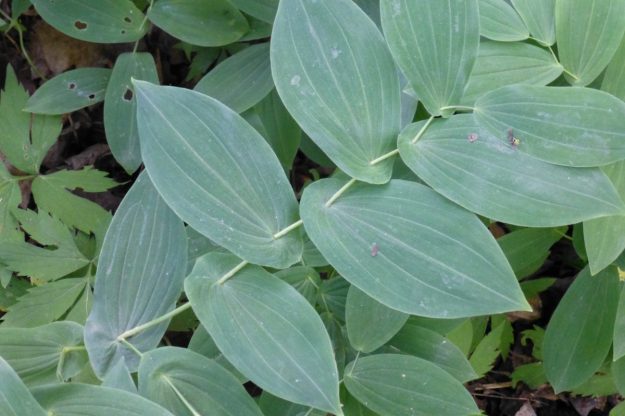Family members refer to our backyard as Miles’ laboratory. Whenever I see the beginnings of an interesting plant, I watch it grow to full size and to flower. The plant you see in the photograph above looked a lot like Nipplewort; a plant I see fairly often in the woods in June. The only thing that confused me was the height; taller than the 1 – 3 feet high given in Newcomb’s Wildflower Guide.
I love Newcomb’s because you can identify plants even with no flower present.
In this case, however, a flower was present and here it is:
A little addition tells us that this plant is in Newcomb’s 7 or More Regular Parts category.
Now I check to see if the leaves are ALTERNATE on the stem or OPPOSITE.
(In this photo of Bellwort, the leaves are ALTERNATE. If they were growing directly across from each other they would be OPPOSITE.)
The leaves of my plant are clearly alternate.
The final step to to see if they are ENTIRE (even and unbroken edges) or TOOTHED, LOBED or DIVIDED.
They are clearly lobed. This makes the plant a 733 – 734 in Newcomb’s system. (Bare with me!)
A little more investigative work has me on page 372 and there is a drawing of my plant. In the written description, it mentions Lower leaves egg-shaped, shallowly toothed, often with several lobes at the base.
My plant is a very tall Nipplewort. A little more research tells me that Nipplewort is a Eurasian native which has become common since the 1970’s. The habitat is trails and roadsides in deciduous forests but also in gardens, hedges and a variety of disturbed places.
Newcomb even adds (is this a comment on my yard ?) waste places.
Miles Hearn









